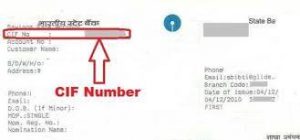CIF number is a unique number assigned by banks to each client. This number is part of a digital file called CIF. It is a digital file on a bank’s computer system that contains all relevant information on a customer. It comprises personal and accounts information about its customers. The CIF includes a CIF number, which serves as a unique identifier for each client. Read on to know everything about it.
What is CIF Number?
CIF number is an 11-digit number that comprises all of the private details of the bank’s clients. It is also known as a Customer Information File. It stores loan, KYC, identification verification, and DEMAT information for all customer accounts with the bank. CIF aids in the reduction of misunderstanding, fraud, or errors in delivering effective service and reception to clients. When the bank or the account holder requires information about the account, they only have easy access to it. It is therefore kept in complete secrecy. It is used as a marketing strategy to promote new goods, programs, and recommendations to customers.
Is the CIF Number and Account number the same?
To begin, CIF is an abbreviation for Customer Information File. The CIF number, like the Account Number, is unique to each account user. Thus, they’re two different numbers and not the same. The CIF number, along with the account number and name of the account holder, is printed on the front page of the passbook.
Importance of CIF
- Using their CIF codes, banks can deliver efficient and precise services to their consumers. You can share this number, for example, if you want to revive a dormant account. It is also beneficial if you desire other bank services such as a Demat account, a loan account, and so on.
- Since this number is unique to each consumer, it ensures that there will be no error or fraud.
- Through CIF, banks have a database on every client. Accessing useful client data is easier with the CIF number. When they approve loans or validate transactions, this is quite beneficial. It contains all essential data, such as the types of accounts owned, their balances, and their transactions.
- CIF number is associated with the crucial file, CIF, which contains extremely private information. For instance, it keeps track of One-Time Password traces.
- This number is used by banks to provide certain goods and services. Based on the Total Relationship Value (TRV) and Customer Relationship Value (CRV), they decide the customer tier and costs for various items (CRV).
- When authorising a loan, it aids in avoiding uncertainty and also helps lower the likelihood of fraud.
Can I get the CIF number by SMS?
As of right present, there is no simple way to send a message and finding out your CIF number. Your email address must first be registered with your bank account. SMS is an easy way to submit an e-statement request. You may discover your CIF number on your e-statement.
How to check the CIF number?

Customer Information File Numbers are typically printed on passbooks or in some banks’ chequebooks. The passbook or chequebook normally has it on the first page. If the passbook isn’t available, you can attempt the following methods to find out your CIF number in another way:
- You can utilise your bank’s internet banking service and adhere to their guidelines. You may access the Customer Details File number on your profile or account information by logging in. You might, for example, verify it in your account summary.
- The majority of banks offer toll-free numbers that you can contact and get your CIF number. They can assist you, they would ask for personal information such as your name, phone, postal address, and account number.
- This number is also displayed in your online bank statements. Through online banking, you may create your own statement and access it in the same place.
- To find out your CIF number, you can always contact the bank office.
Leave a Reply